#1920s woman painters
Explore tagged Tumblr posts
Text
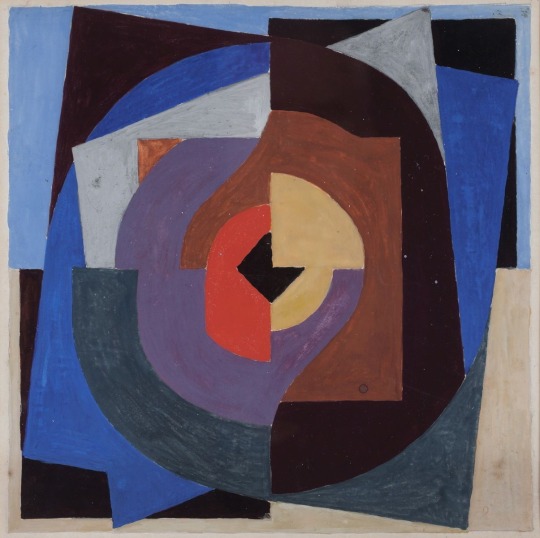
Mainie Jellett, 1897-1944
Abstract Composition
1922
#mainie jellett#modern art#abstract#abstract art#abstract painting#irish artist#irish art#irish painter#woman painter#women in art#woman painting#cubism#abstraction#art history#1920s art#1920s style#1920s#the 20s#the roaring twenties#modern art history#abstract composition#jellett
25 notes
·
View notes
Photo

Käte Hoch, Selbstbildnis, 1929.
#Käte Hoch#self-portrait#selbstbildnis#neue sachlichkeit#magic realism#new objectivity#woman painter#painting#woman artist#fern#1920s painting#modernism#realism#1920s realism
19 notes
·
View notes
Text
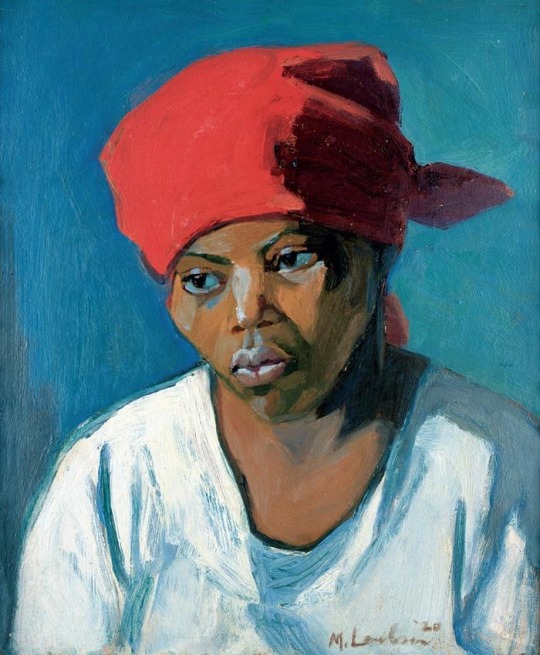
Portrait of a Woman with a Headscarf
Maggie Laubser
oil on board, 1920
14 notes
·
View notes
Text
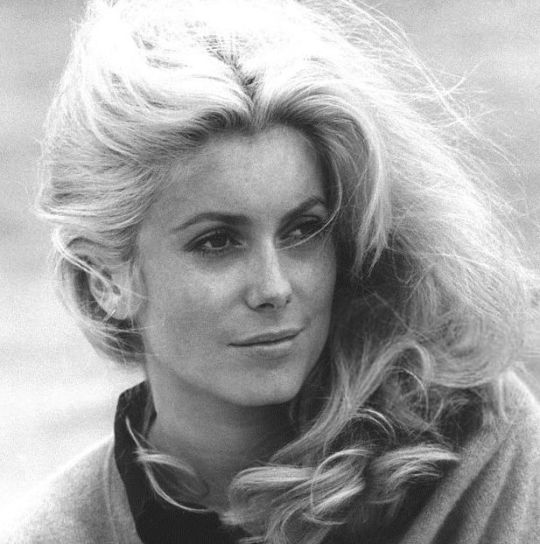

Propaganda
Catherine Deneuve (Belle de Jour, The Umbrellas of Cherbourg, The Young Girls of Rochefort)—Say what you will about the French but they really went off with Catherine Deneuve
Setsuko Hara (Tokyo Story, Late Spring, The Idiot)— "'The only time I saw Susan Sontag cry,' a writer once told me, his voice hushed, 'was at a screening of a Setsuko film.' What Setsuko had wasn’t glamour—she was just too sensible for that—it was glow, one that ebbed away and left you concerned, involved. You got the sense that this glow, like that of dawn, couldn’t be bought. But her smiles were human and held minute-long acts, ones with important intermissions. When she looked away, she absented herself; you felt that she’d dimmed a fire and clapped a lid on something about to spill. Over the last decade, whenever anyone brought up her lips—'Setsuko’s eternal smile,' critics said, that day we learned that she’d died—I thought instead of the thing she made us feel when she let it fall." - Moeko Fujii
This is round 3 of the tournament. All other polls in this bracket can be found here. Please reblog with further support of your beloved hot sexy vintage woman.
[additional propaganda submitted under the cut.]
Catherine Deneuve propaganda:

"One of the greatest european actresses of all time. Famous for portraying 'aloof and mysterious beauties', she could play both the innocent and adorable and the cold and erotic parts. She was so beautiful she was chosen to be the face of Marianne, France's national symbol."

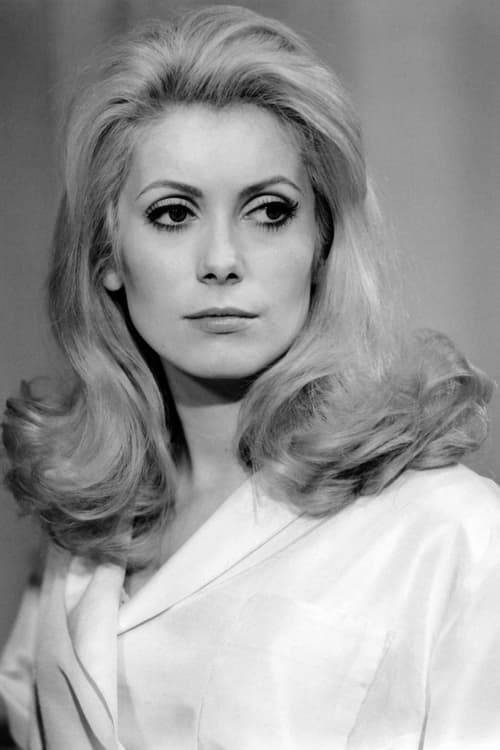
"She was a French movie star famous for icy and aloof roles and worked with some of the greatest international directors in the world (Jacques Demy, Luis Buñuel, and François Truffaut to name a few). She could kill you with her gaze and her bone structure should be studied by painters"
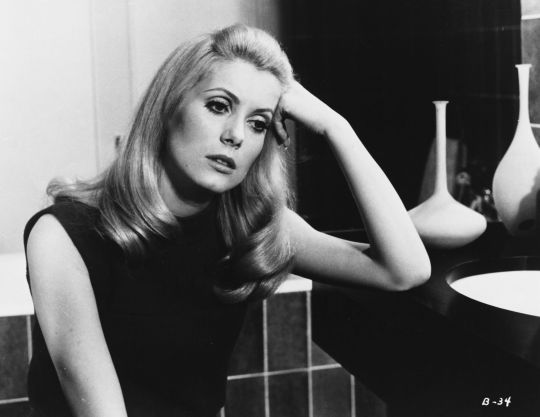
"One of the most famous of French actresses that has grace the film screen. She is just stunning and beautiful."
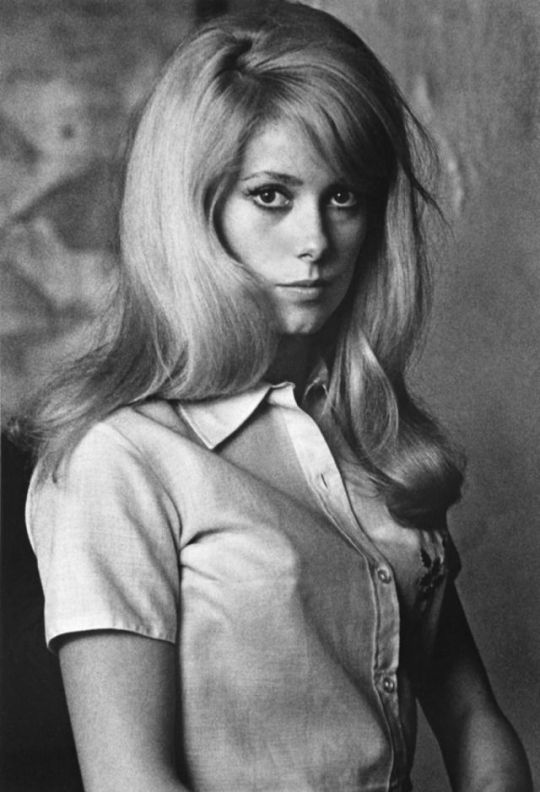
Setsuko Hara:

One of the best Japanese actresses of all time; a symbol of the golden era of Japanese cinema of the 1950s After seeing a Setsuko Hara film, the novelist Shūsaku Endō wrote: "We would sigh or let out a great breath from the depths of our hearts, for what we felt was precisely this: Can it be possible that there is such a woman in this world?"
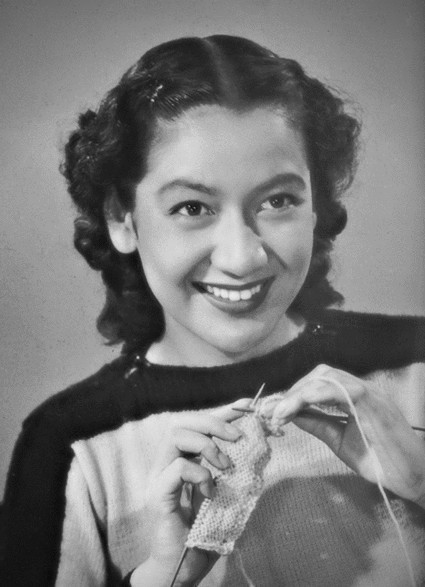

One of the greatest Japanese actresses of all time!! Best known for acting in many of Yasujiro Ozu's films of the 40s and 50s. Also she has a stunning smile and beautiful charm!
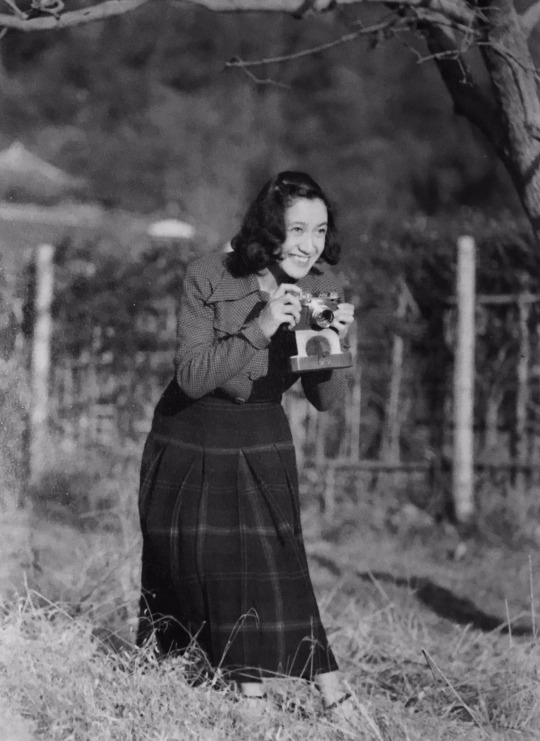
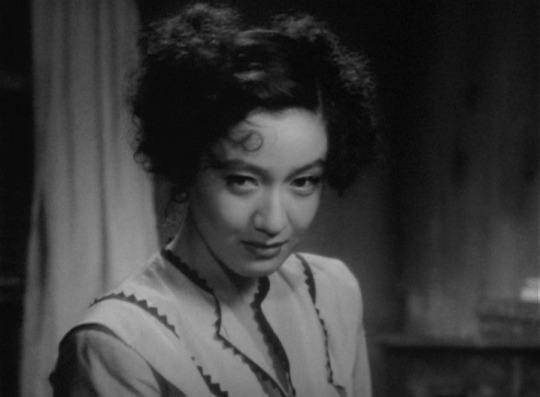
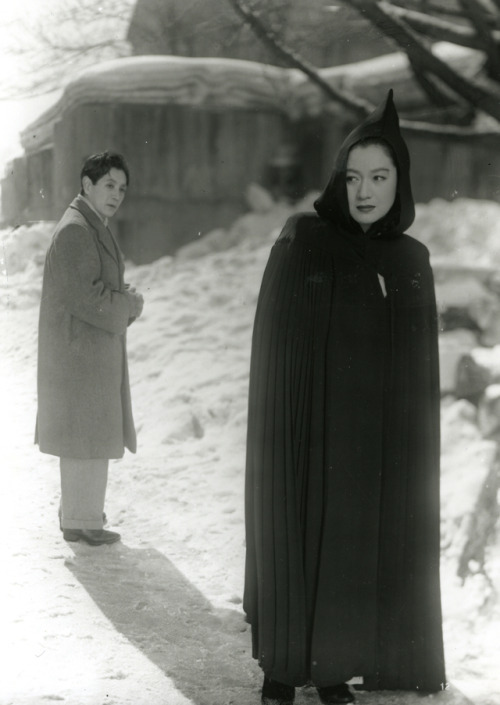
Linked gifset
Linked gifset 2

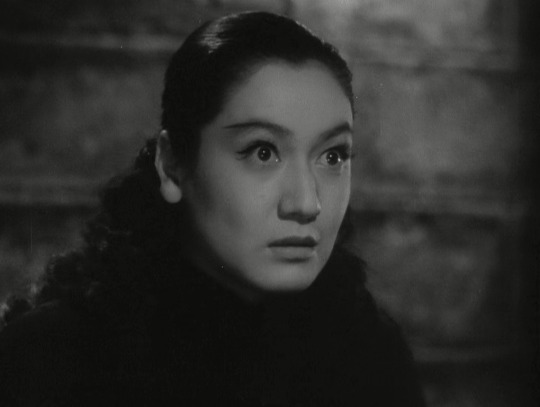

She's considered by some to be the greatest Japanese actress of all time! In Kurosawa's The Idiot she haunts the screen, and TOTALLY steals the show from Mifune every time she appears.

"No other actor has ever mastered the art of the smile to the same extent as Setsuko Hara (1920–2015), a celebrated star and highly regarded idol who was one of the outstanding actors of 40s and 50s Japanese cinema. Her radiant smile floods whole scenes and at times cautiously undermines the expectations made of her in coy, ironic fashion. Yet her smile's impressive range also encompasses its darker shades: Hara's delicate, dignified, melancholy smile with which she responds to disappointments, papers over the emotions churning under the surface, and flanks life's sobering realizations. Her smiles don't just function as a condensed version of her ever-precise, expressive, yet understated acting ability, they also allow the very essence of the films they appear in to shine through for a brief moment, often studies of the everyday, post-war dramas which revolve around the break-up of family structures or the failure of marriages. Her performances tread a fine line between social expectation and personal desire in post-war Japan, as Hara attempts to lay claim to the autonomy of the female characters she plays – frequently with a smile." [link]
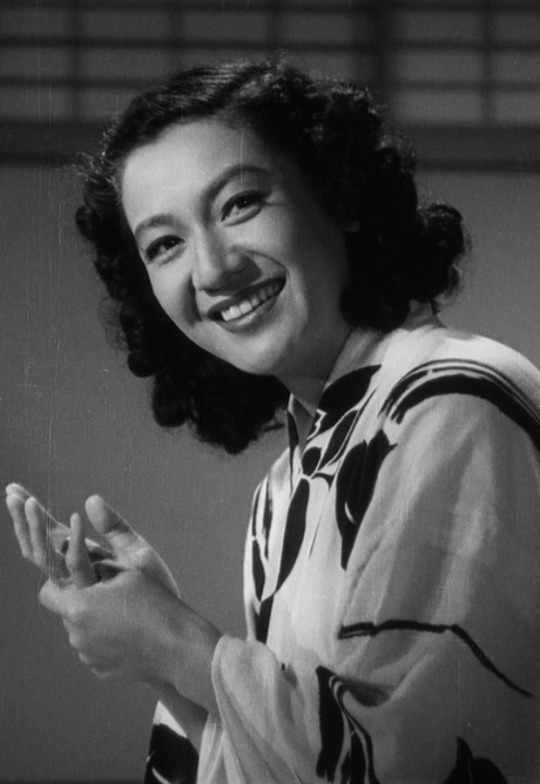
Leading lady of classic Japanese cinema with a million dollar smile
Maybe the most iconic Japanese actress ever? She rose to fame making films with Yasujiro Ozu, becoming one of the most well-known and beloved actresses in Japan, working from the 30s through the 60s in over 100 hundred. She is still considered one of the greatest Japanese actresses ever, and in my opinion, just one of the greatest actresses of all time. And she was HOT! Satoshi Kon's film Millennium Actress was largely based on her life and her career.
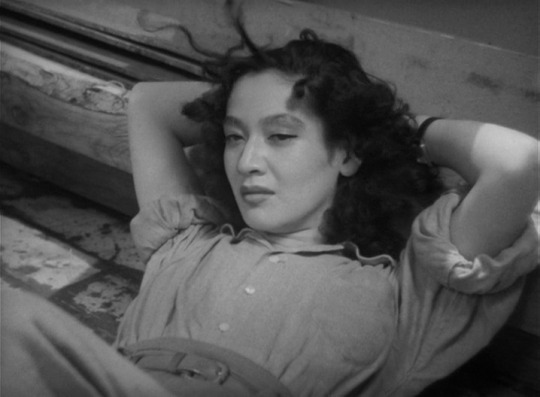
177 notes
·
View notes
Text
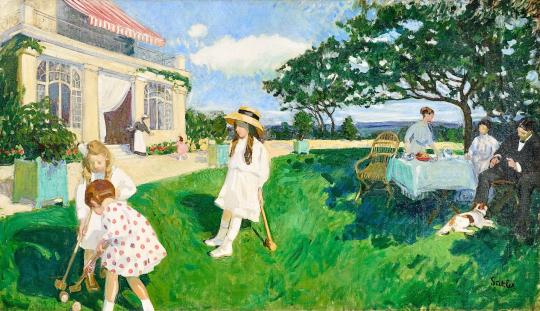
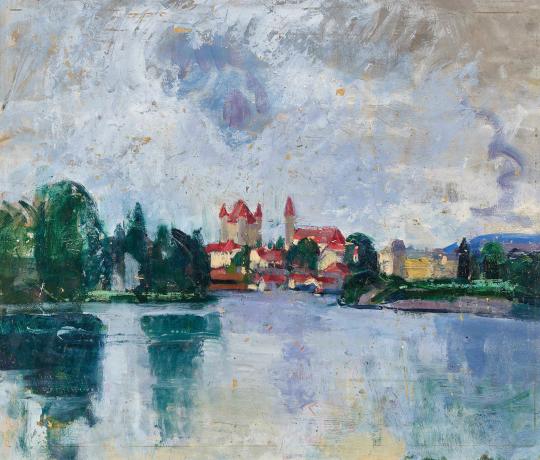
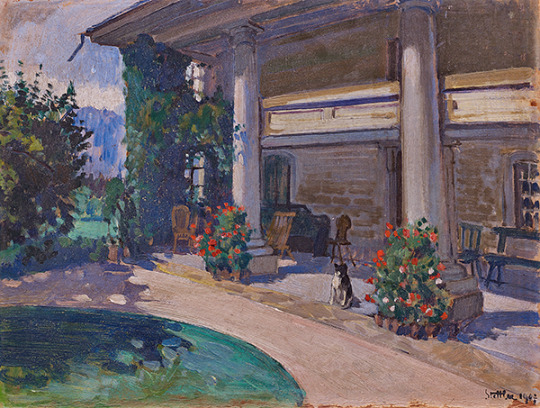
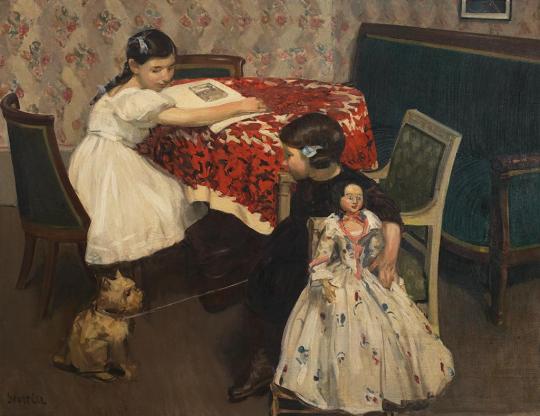
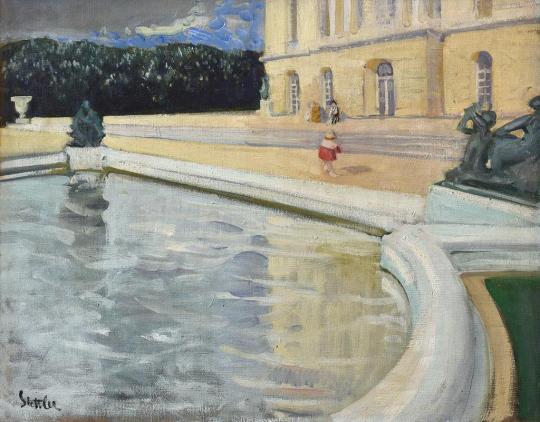
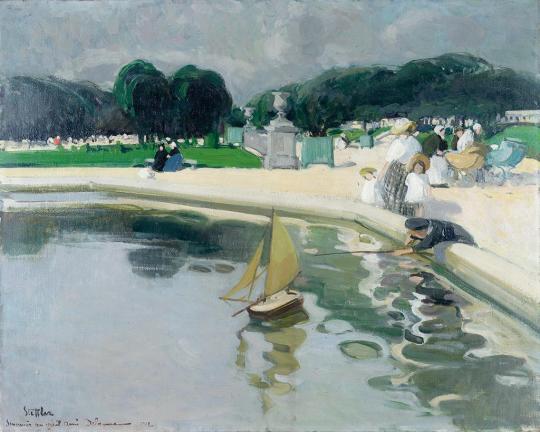
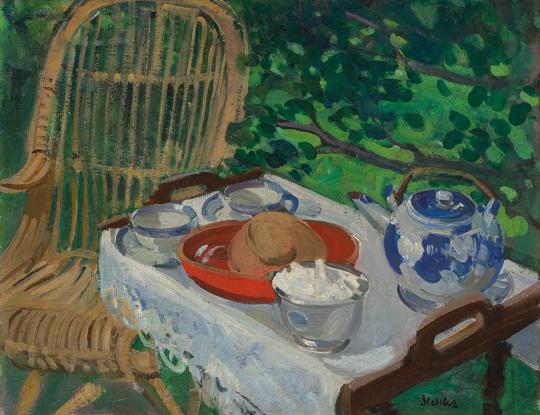
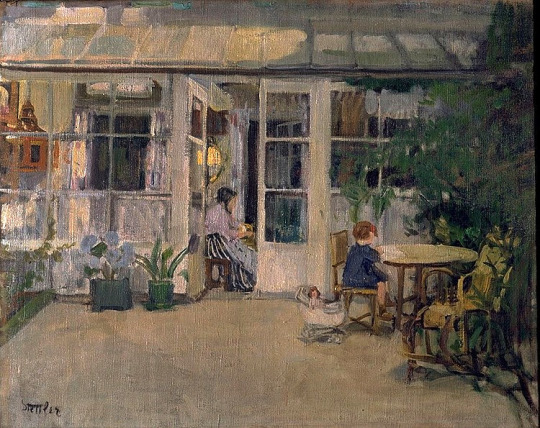

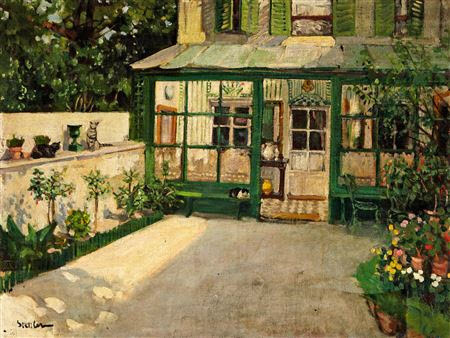
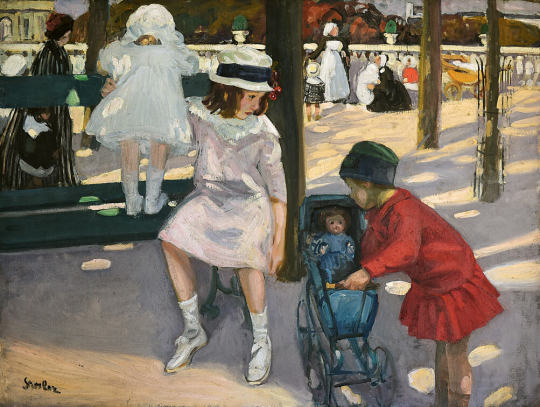
Martha Stettler (Swiss, 1870-1945)
Together with her partner Alice Dannenberg, she founded the ‘Académie de la Grande Chaumière’ in Paris in 1904, where she later became its head, much to the disdain of Swiss artist Ferdinand Hodler, who said, “We do not want women here!” He was determined to prevent women having any access to the Swiss professional association of painters and sculptors (GSMBA). Stettler ran the academy successfully in spite of the misogynistic attitudes she was faced with in her work. It was favoured by students because of its easy-going approach to learning, and the school’s alumni included a star-studded cast; Alberto Giacometti, Meret Oppenheim and Louise Bourgeois. Stettler also became the very first and only woman to exhibit her art at the 12th Venice Biennale in 1920. (source)
106 notes
·
View notes
Text
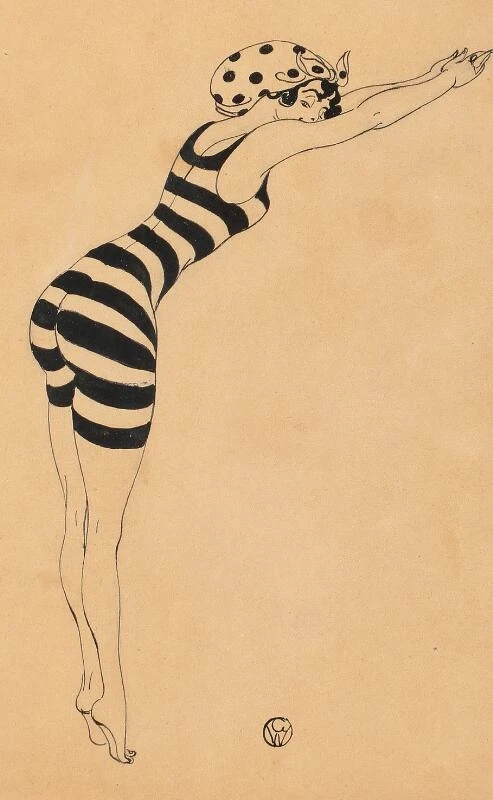
Gerda Wegener (1886 – 1940) Danish illustrator and painter
Woman in a swimsuit
1920's
#indianink on paper
85 notes
·
View notes
Text
Hi ladies! For this 3rd post I am again going to talk about a woman I mentionned yesterday (in the post about Natalie Clifford Barney) ;
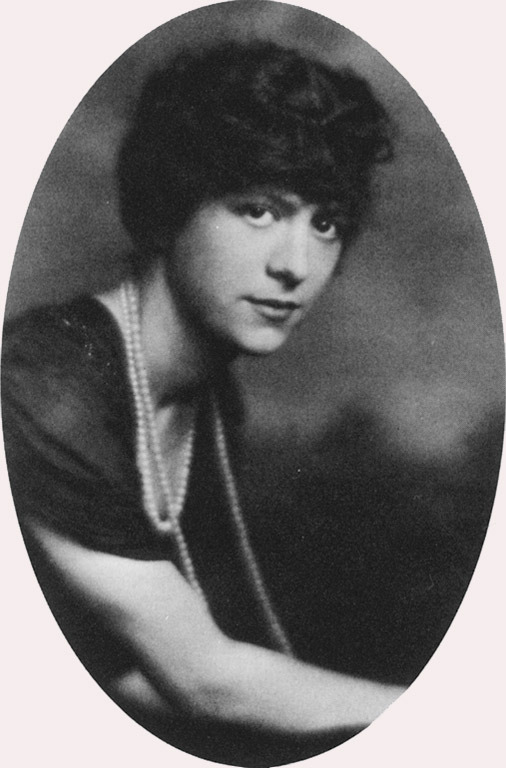

Romaine Brooks !
Her birth name is Beatrice Romaine Goddard, but we know her as Romaine Brooks. Successful italian american painter, she was born in 1874 in Roma and died in 1970 in Nice (in France) at 96 years old. Her works were successful in the early years of her career, before declining considerably during the 1930s and regaining popularity in the 1960s.
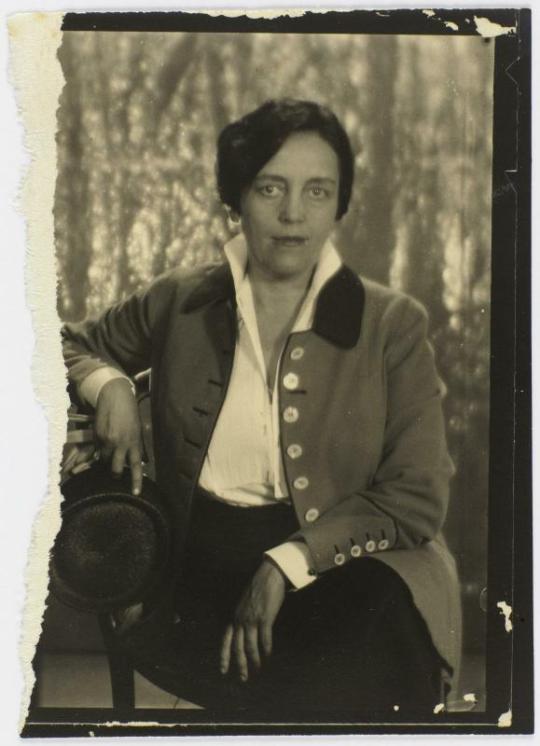
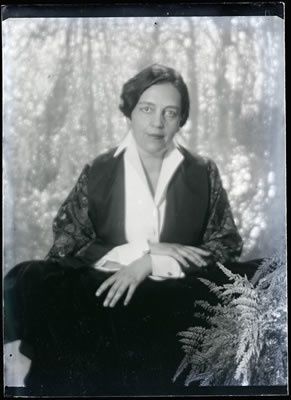
Both her parents were American and had two other children. Shortly after Romaine's birth, they decided to return to the United States, then broke up.
It was here that life took a difficult turn for young Beatrice: her mother took very little care of her, and abused her, accusing her of being possessed by the devil and of bringing bad luck. When she was seven, her mother abandoned her, leaving her to a poor family in New York. This same family informed the child's grandfather, who then decided to take charge of his granddaughter and her education. He placed her in various religious institutions, and for years she saw very little of her mother.
She began drawing and painting at the age of 16.
In 1893, she moved to Europe, became a cabaret singer in Paris and studied painting in Roma. She returned to live with her mother in 1901, after her brother's death, but her mother died in 1902, leaving Romaine to inherit her grandfather's fortune.
From then on, Romaine began to live a very unconventional life. In 1903, she, an open lesbian, and her homosexual friend John Ellington Brooks decided to marry. It's obviously not a love marriage, but an agreement, an arrangement between the two friends: this marriage will give the impression that they respect social norms and will therefore spare them the comments and pressure of society, and they will be free to love whoever they want, sheltered behind their appearance as a married couple.
Romaine and John never lived together, but to thank him for helping her, Romaine paid her friend a monthly allowance.
Romaine has had many lovers in her life : Dolly Wilde, (yeah this is Oscar Wilde's niece, and an interesting person!), the dancer Ida Rubistein, the marquise Luisa Casati, the pianist Renata Borgatti... but the love of her life was Natalie Clifford Barney. As you know it if you've read my post about Natalie, the two women stayed together for about 50 years, from 1914/1915 (unclear) until Romaine's death in 1970.
In 1904, she began using shades of gray in her work, and these would remain the dominant tones in her later paintings.
One of her best-known paintings is "La France Croisée" (Crossed France), which she painted in reaction to the first Battle of Ypres, at the beginning of the first world war.
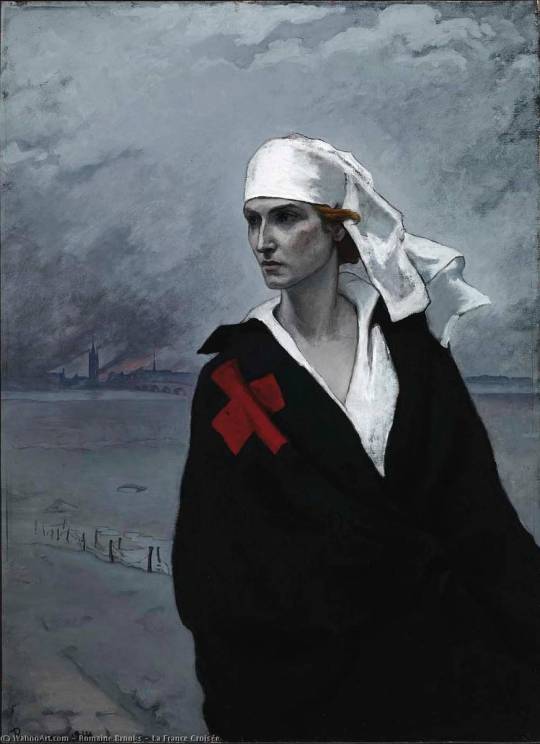
The "patriotism" that transpires from this allegorical painting and inspired her mobilization for France and the Croix-Rouge française earned her the Légion d'Honneur in 1920.
She was a very successful painter. Her paintings were exhibited all over the world, from Paris to London to New York. Her career peaked in 1925, followed by a decline in the '30s. At this point, she gave up painting and concentrated on drawing, creating works inspired by her unhappy childhood. In the 60s, however, the art world started to take a renewed interest in her paintings.
She died at 96 in Nice, in December 1970, and since then, several prestigious exhibitions in her honor have been organized, rekindling public interest in Romaine Brooks and her work.
Here are some of her paintings :

(This is Natalie Clifford Barney!)
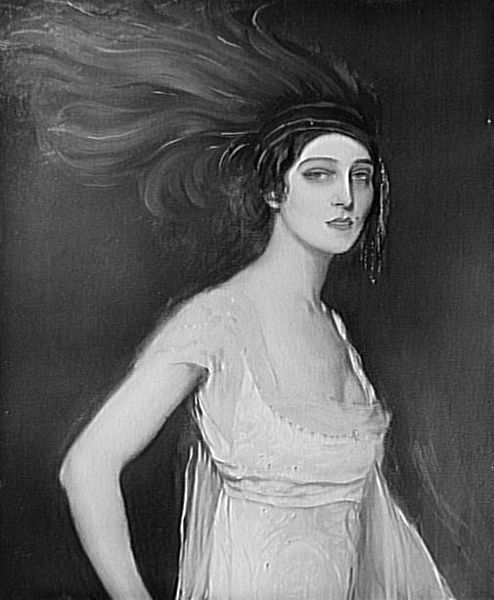
(This is Ida Rubistein)

(The Charwoman)
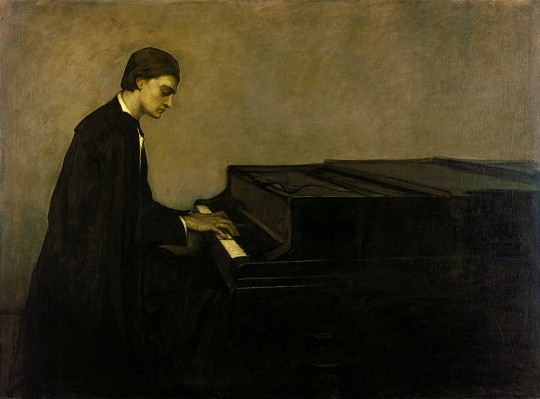
(This is Renata Borgatti)
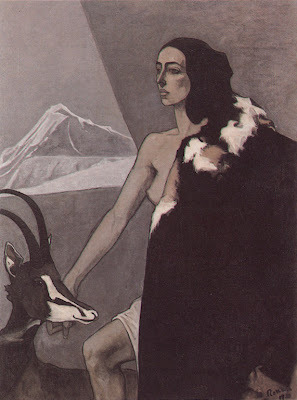
(Chasseresse)
There is way much more to say about her and you should really check her life and her art! She was an interesting person with interesting works and I personally am glad I found her paintings.
See you tomorrow!
#lesbian#pride#lesbian pride#pride month#lgbt#lgb#female artists#female homosexual#female homosexuality#female history#women's history#lesbian history#lesbian artist#romaine brooks
77 notes
·
View notes
Text







Venice in the art of Alexandra Exter (1882-1949)
Carnival in Venice (oil on canvas) 1930s
Carnival Procession (oil on canvas)
Masked Figures by the Banks of a Venetian Canal (oil on canvas)
Venetian Masks (oil on panel)
Pulcinella (gouache on paper) late 1920s-30s
Venice (oil and sand on canvas) 1925
Venice, 1915
"Aleksandra Aleksandrovna Ekster, also known as Alexandra Exter, was a Russian and French painter and designer. As a young woman, her studio in Kiev attracted all the city's creative luminaries, and she became a figure of the Paris salons, mixing with Picasso, Braque and others. She is identified with the Russian/Ukrainian avant-garde, as a Cubo-futurist, Constructivist, and influencer of the Art Deco movement. She was the teacher of several School of Paris artists such as Abraham Mintchine, Isaac Frenkel Frenel and the film directors Grigori Kozintsev, Sergei Yutkevich among others." [x]
"Exter painted views of Florence, Genoa and Rome, but ‘most insistent and frequent were images of Venice. The city emerged in various forms: via the outlines of its buildings, in the ‘witchcraft of water’. In glimmering echoes of Renaissance painting, in costumes and masks and its carnivals’.
"Exter’s characteristic use of the bridge as a stage platform, seen most clearly in Carnival in Venice, is a legacy of her time as Tairov’s chief designer [Alexander Tairrov, director of Moscow's Kamerny Theatre]; the director believed in breaking up the flatness of the stage floor which the artist achieved for him by introducing arches, steps and mirrors. Even in her easel work, the emphasis is at all times on theatricality. Bridges are used as proscenium arches, the architecture creates a stage-like space in which to arrange her cast."
"For all her modernity, references to Venetian art of the past abound in these paintings. The masked figures are influenced by the Venetian artist Pietro Longhi, to whom Exter dedicated a series of works around this time. The incredible blues used in both Carnival Procession and Masked Figures by the Banks of a Venetian Canal are a direct reference to Titian, who was famed for his use of ultramarine, the pigment most associated with Venice’s history as the principal trading port with the East." [x]
"Exter had long since abandoned the Cubist syntax by 1925 but her sense of colour remained together with a strong conviction, shared with Léger, that a work of art should elicit a feeling of mathematical order. In its graceful interaction of fragmented planes and oscillation between emerging and receding elements, Venice (1925) echoes the more precise qualities that also appear in Léger's work at this time, both artists occupied with the continuous modulation of surfaces and the 'melody of construction' that Le Corbusier was still advocating in the 1930s. But while Exter subscribed to Léger's theory that 'a painting in its beauty must be equal to a beautiful industrial production', she never fully embraced the aesthetics of the machine and rejecting the common opposition between ancient and modern, her work often retains a classical edge - for example in these trefoil windows, arches and vaults. Human figures, which had been nearly absent from her Cubo-futurist paintings, also return in other works from this period."
"She was undoubtedly aware of the concept of 'defamiliarisation', a term first coined by the influential literary critic Viktor Shklovsky in 1917:
'The purpose of art is to impart the sensation of things as they are perceived and not as they are known. The technique of art is to make objects 'unfamiliar,' to make forms difficult to increase the difficulty and length of perception because the process of perception is an aesthetic end in itself and must be prolonged.'
An instance of this device is discernable in the present tight formation of the oars, seen from above. Like Braque and Picasso, Exter incorporates sand into certain areas of pigment to enhance the differentiation of surfaces, a technique also used to 'increase the length of perception'. The occasional lack of overlap between the boundaries of the textured surfaces and colour planes strengthens the paradoxical combination of tangible presence and elusive abstraction that makes Venice such a powerful work."
"Venetian subjects occur in Exter's work as early as 1915. A gigantic panneau of the city was one of the final works she produced in the Soviet Union and exhibited in the 1924 Venice Biennale." [x]
"The specific theme of the Commedia dell’Arte first appeared in Exter’s work in 1926 when the Danish film director Urban Gad approached her to design the sets and marionettes for a film which was to tell the story of Pulcinella and Colombina, transposing them from the Venice of Carlo Goldoni to contemporary New York. Pulcinella most likely relates to the artist’s subsequent experimentations on the theme of the Commedia dell’Arte. Pulcinella, who came to be known as Punch in England, is one of the classical characters of the Neapolitan puppetry. Typically depicted wearing a pointed hat and a mask, Pulcinella is an opportunist who always sides with the winner in any situation and fears no consequences." [x]
34 notes
·
View notes
Text
A look at the Constructivism in Concept skins

Long post warning. And please fell free to corect me, if I'm wrong about anything.
So these skin line's aesthetic, and basis draws heavily from the Constructivism movement.
The Constructivism was an art movement that started in the 1913 by by Soviet painter and architect Vladimir Tatlin. The art movement was a rejection of the idea of autonomous art. It was in favour of art as a practice for social purposes. The Constructivism movement had a great effect on modern art movements during the 20th century, two of the movement that it had a major influenc on was the Bauhaus, and the De Stijl movements.
Here are a few art works from it:

Monument to commemorate the Third International by Vladimir Tatlin, from 1919 - 1920.

Illustration to "For the voice" by Vladimir Mayakovsky by El Lissitzky, from 1920.

Proun by El Lissitzky, from 1923.
Now that we know what Constructivism is let's look at the skins from the skin line.
1. Eternity - A Visit to the Arctic


Eternity's skin probably is based on the Arktika, a retired nuclier powerd icebreaker. It was one of the first surface ships to reach the North Pole. The writing on the splash art roughly translates to "Glory to the hero of the Arctic with a boundless thirst for knowlge!", but take this with a grain of salt, dou to I used imige translation.
2. Baby blue - On the Sparrow Hills


Baby blue is wearing a traditional Russian ethnic costume called Sarafan. And the Sparrow Hills is a hill in Moscow. For a time it was called "Lenin Hills".
3. Oliver Fog - See you at the workers' Club


So this garment is probaby based on, or refrences to the 8 hour working regulations. Basicly after the October Revolutin, the decree " Decree on the Hours of Laber" was published, which decreesed the working hours to 8 hours for all professions. This or it's a refrenc to the 1912 UK miners strike. But I would say it's probably the first one.
4. Medicine Pocket - The Cosmos Photographer


Last but not least. The gesture is a tribute Marie Salomea Skłodowska-Curie, Polish physicist and chemist, and the first woman to win a Noble prize. The building in the background is probably the bulding of the Russian Academy of Sciences, which made contributions to the Soviet space program. The wheat is probably a refrence to Nikolai Ivanovich Vavilov, a Russian agronomist, botanist, and geneticist, who identified the centers of origin of cultivated plants. The apple tree is posibly a refrenc to Ivan Vladimirovich Michurin, a Russian practitioner of selection to produce new types of crop plants, and was one of the founding fathers of scientific agricultural selection.
Sorces: - WikiArt
-Google
#reverse 1999#reverse 1999 eternity#reverse 1999 baby blue#reverse 1999 oliver fog#reverse 1999 medicine pocket#constructivism
52 notes
·
View notes
Text
Writing Analysis: Of Mice and Men (Cultural References)
Bindle: A bag, sack, or carrying device.
Bindle Stiff: Hobo; transient who carries his belongings in a sack.
Bunk House: A sleeping quarters intended for use by multiple people.
Talcum Powder: Very similar in texture to baby powder, talcum powder was used mainly after bathing or shaving.
Apple Box: A box used for storage or as a stepstool capable of holding a person's weight.
Scourges: A widespread affliction, an epidemic illness or the consequence of some natural disaster, like fire, flood, or a migration of locusts.
Pants Rabbits: A sexually transmitted disease, known as pubic lice.
Graybacks: The equivalent of ticks or lice.
Liniment: A topical cream for the skin that helps with pain or rashes.
Jerkline Skinner: Lead driver of a team of mules
Stable Buck: A derogatory name for an African-American man who works in the stables.
Stetson Hat: A famous brand of hats, especially cowboy hats.
Swamper: A general assistant; handyman.
Murray and Ready: An employment agency, specializing in farm work.
Work Slips: Proof that people had been hired to do a job.
Cultivator: A farming tool used to stir and soften the soil either before or after planting.
Cesspool: A well or pit filled with drainage or sewage.
Slough: A muddy or marshy area.
Tart: A woman who tempts men or who is sexually promiscuous.
Buck Barley: To throw large bags of barley on a truck.
Lynch: To illegally execute a person, generally applied to the hanging and/or burning of African-Americans in the south.
Slug of Whiskey: Equivalent to a hip flask of whiskey.
Gut Ache: A stomach ache.
Airedale: A type of dog, specifically Terrier.
Pulp Magazine: During the 1920s-1950s, inexpensive fiction magazines. From 1950 on, the term also came to represent mass market paperbacks.
Luger: The Luger pistol was an expensive, high maintenance weapon manufactured and used primarily in the German army.
Euchre: A card game played in England, Canada, and some parts of the U.S.
Two Bits: Twenty-Five cents.
Rag Rug: Rugs created from rags that were tied together by knots.
Kewpie Doll: A particular style of doll, one that was usually won at carnivals.
Phonograph: The first device for recording and playing sound, most specifically music.
Parlor House: Could be considered a restaurant, but more often parlor houses were brothels.
Hutches: A form of furniture, very similar to a wardrobe.
Welter: A boxer (refers to welterweight, a weight class in boxing).
Nail keg: A wooden barrel that could usually hold 100 pounds or more inside.
Russian Hill: Affluent residential neighborhood in San Francisco, California.
Travels with a Donkey: Travels with a Donkey in the Cevennes (1879), one of Robert Louis Stevenson's earliest published works.
Varro: Marcus Terentius Varro (116-29 B.C.E.), Roman scholar/author and horticulturist.
Velasquez's Cardinal: Seventeenth-century painting by Spanish painter Diego Rodriguez de Silva y Velazquez.
Zane Grey: American adventure novelist (1872-1939).
Source ⚜ Writing Notes & References
#of mice and men#literature#writing analysis#cultural references#writing reference#writeblr#spilled ink#dark academia#writers on tumblr#writing prompt#poetry#poets on tumblr#light academia#studyblr#writing inspiration#writing ideas#writing inspo#writing resources
31 notes
·
View notes
Note
Time Travel AU! ⏰
Ooo okay , how about a Somewhere in Time AU
Art student Peeta is celebrating a successful exhibit when a mysterious elderly woman approaches him, pressing a necklace with a single pearl pendent to his palm she bids him ‘Come back to me’ - hmm weird, but whatever.
Years later Peeta is a successful painter, but feeling unmoored and uninspired. He decides to escape to the Appalachian mountains: staying at a cabin resort.
One day he’s in the lobby when the girl at the desk plays an old recording of a Jazz singer from the 20s. He’s inspired. He runs back to his room to paint. The next day he asks the girl (Posy) about the singer and she tells him all about Katniss Everdeen: a local woman and distant relation of the Hawthornes who made it big as a jazz singer in the 1920s. She lends him her records and then shows him Katniss’s portrait hanging in the resort.
There’s something so familiar about the painting, the style, the woman. And then he notices… she’s wearing his necklace.
Peeta goes mad. He dedicates himself to finding out as much as he can about the woman: going to records stores, courthouses, libraries. He finally speaks to Posy’s mother and owner of the resort, Hazelle Hawthorne, who remembers Katniss. She pulls out a box of her possessions: amung them is a book about time travel by Dr Haymitch Abernathy.
Peeta goes to Haymitch who spins a tale about hypnotizing himself unto traveling back through time (I’d really have to watch the movie again to remember the particulars here)
Peeta buys an old suit and vintage coins and tries for himself - it doesn’t work
He’s been living in a fantasy world, this is crazy he needs to get back to his reality.
He’s getting ready to check out when Hazelle seeks him out to show him some photos she’s found. As he’s flipping through the stack he finds a photo of Katniss smiling in the arms of a man… a man that look’s shockingly like him… it can’t be?… can it?
He asks Hazelle if he can look at the portrait again. He has a sinking suspicion that he knows the artist, but the signature is tucked behind the frame - she agrees and there it is: Peeta Mellark March 19–,
Driven by the proof that he’d succeed, he’s finally able to manifest himself back in time to 19– when Katniss was just starting out her singing career.
Unfortunately there’s no other way for this to end but tragedy…
#ask#mage-chocolate#thank you for the ask!!#somewhere in time AU#everlark fanfiction concept#now I’m deep in my feels#I need to rewatch this#…
16 notes
·
View notes
Text
THIS DAY IN GAY HISTORY
based on: The White Crane Institute's 'Gay Wisdom', Gay Birthdays, Gay For Today, Famous GLBT, glbt-Gay Encylopedia, Today in Gay History, Wikipedia, and more … November 22

JFK November 22, 1963


1869 – André Gide (d.1951) was a French author and winner of the Nobel Prize in literature in 1947. Gide's career ranged from its beginnings in the symbolist movement, to the advent of anticolonialism between the two World Wars.
Known for his fiction as well as his autobiographical works, Gide exposes to public view the conflict and eventual reconciliation between the two sides of his personality, split apart by a straight-laced education and a narrow social moralism.
Gide was born in Paris on 22 November 1869, into a middle-class Protestant family. His father was a Paris University professor of law and died in 1880.
Gide was brought up in isolated conditions in Normandy and became a prolific writer at an early age, publishing his first novel, The Notebooks of Andre Walter (French: Les Cahiers d'André Walter), in 1891.
In 1893 and 1894, Gide traveled in Northern Africa, and it was there that he came to accept his attraction to boys. He befriended Oscar Wilde in Paris, and in 1895 Gide and Wilde met in Algiers. There, Wilde had the impression that he had introduced Gide to homosexuality, but, in fact, Gide had already discovered this on his own.
In 1895, after his mother's death, he married his cousin Madeleine Rondeaux, but the marriage remained unconsummated.
In 1908, Gide helped found the literary magazine Nouvelle Revue Française (The New French Review).
In 1916, Marc Allégret, only 15 years old, became his lover. Marc was the son of Elie Allégret, best man at Gide's wedding. Of Allégret's five children, André Gide adopted Marc. The two fled to London, in retribution for which his wife burned all his correspondence, "the best part of myself," as he was later to comment.
In the 1920s, Gide became an inspiration for writers such as Albert Camus and Jean-Paul Sartre. In 1923, he published a book on Fyodor Dostoyevsky; however, when he defended pederasty in the public edition of Corydon (1924) he received widespread condemnation. He later considered this his most important work.
In 1923, he sired a daughter, Catherine, by Elisabeth van Rysselberghe, a woman who was much younger than him. He had known Elisabeth for a long time, as she was the daughter of his closest female friend, Maria Monnom, the wife of his friend, the Belgian neo-impressionist painter Théo van Rysselberghe. This would cause the only crisis in the long-standing relationship between Allégret and Gide and damaged the relation with Van Rysselberghe. This was possibly his only sexual liaison with a woman and it was brief in the extreme, but his daughter Catherine became his only descendant by blood. He liked to call Elisabeth "La Dame Blanche" ("The White Lady"). Elisabeth eventually left her husband to move to Paris and manage the practical aspects of Gide's life (they had adjoining apartments built for each of them on the rue Vavin). She worshipped him, but evidently they no longer had a sexual relationship. Gide's legal wife, Madeleine, died in 1938. Later he used the background of his unconsummated marriage in his novel Et Nunc Manet in Te.
From July 1926 to May 1927, he travelled through the French Equatorial Africa colony with his lover Marc Allégret. In his published journal, he criticized the behavior of French business interests in the Congo and inspired reform. In particular, he strongly criticized the Large Concessions regime, according to which part of the colony was conceded to French companies which could exploit all of the area's natural resources, in particular rubber. He related how natives were forced to leave their village during several weeks to collect rubber in the forest, and went as far as comparing their exploitation to slavery. The book had important influence on anti-colonialism movements in France and helped re-evaluate the impact of colonialism.
Gide left France for Africa in 1942 and lived in Tunis until the end of World War II. In 1947, he received the Nobel Prize in Literature. He devoted much of his last years to publishing his Journal. Gide died in Paris on 19 February 1951. The Roman Catholic Church placed his works on the Index of Forbidden Books in 1952.


1913 – Benjamin Britten, Baron Britten, (d.1976) was an English composer, conductor, and pianist. He showed talent from an early age, and first came to public attention with the a cappella choral work A Boy Was Born in 1934. With the premiere of his opera Peter Grimes in 1945, he leapt to international fame. For the next fifteen years he devoted much of his compositional attention to writing operas, establishing him as one of the leading 20th century figures in this genre. Britten's interests as a composer were wide-ranging; he produced important music in such varied genres as orchestral, choral, solo vocal (much of it written for the tenor Peter Pears), chamber and instrumental, as well as film music. He also took a great interest in writing music for children and amateur performers, and was an outstanding pianist and conductor.
Britten was born in Lowestoft, Suffolk. His father was a dentist, and his mother a talented amateur musician who gave Britten his first lessons in piano and notation. He showed musical gifts very early in life, making his first attempts at composition aged five, and thereafter composing prolifically as a child. He started piano lessons with a teacher from his pre-prep school when aged 7, and viola lessons when 10 years old.
Britten heard Frank Bridge's orchestral poem The Sea at a festival and was, as he put it, 'knocked sideways'. A family friend of Frank Bridge and was able to arrange an introduction. After examining Britten's work, Bridge took him on as a composition pupil.
In April 1935, he was approached by the film director Alberto Cavalcanti to write the film score for the documentary The King's Stamp, produced by the GPO Film Unit. He subsequently met W. H. Auden, who was also working for the GPO Film Unit; together they worked on the films Coal Face and Night Mail. They also collaborated on the song cycle Our Hunting Fathers Op. 8, radical both in politics and musical treatment, and other works.
Of more lasting importance to Britten was his meeting in 1937 with the tenor Peter Pears, who was to become his musical collaborator and inspiration as well as his life partner. In the same year he composed a Pacifist March (words, Ronald Duncan) for the Peace Pledge Union, of which, as a pacifist, he had become an active member, but the work was not a success and soon withdrawn. One of Britten's most noteworthy works from the 1930s was Variations on a Theme of Frank Bridge for string orchestra, Op. 10, written in 1937.

Britten (seated) and Peter Pears
In early 1939, Britten and Pears followed Auden to America. There, in 1940, Britten composed Seven Sonnets of Michelangelo, the first of many song cycles for Pears. Already friends with the composer Aaron Copland, Britten encountered his latest works Billy the Kid and An Outdoor Overture, both of which manifestly influenced his own music. While in America Britten wrote his first music drama, Paul Bunyan, an operetta (to a libretto by Auden). The period in America was also remarkable for a number of orchestral works, including the Violin Concerto Op. 15, and Sinfonia da Requiem Op. 20 (for full orchestra).
Britten and Pears returned to England in 1942, and both applied for recognition as conscientious objectors. He completed the choral works Hymn to St. Cecilia (his last large-scale collaboration with Auden) and A Ceremony of Carols during the long sea voyage. He had already begun work on his opera Peter Grimes based on the writings of Suffolk poet George Crabbe, and its première at Sadler's Wells in 1945 was his greatest success thus far.
Peter Grimes was the first in a series of English operas, of which Billy Budd (1951) and The Turn of the Screw (1954) were particularly admired. His Shakespeare opera, A Midsummer Night's Dream, followed in 1960. These operas share common themes. Even in his comic opera Albert Herring of 1947, all feature an 'outsider' character excluded or misunderstood by society. Often this is the eponymous protagonist, as in Peter Grimes and Owen Wingrave.
In his last decade, Britten's health deteriorated,and his later works became more and more sparse in texture. They include the operas Owen Wingrave (1970) and Death in Venice (1971-1973) Having previously declined a knighthood, Britten accepted a life peerage on 2 July 1976 as Baron Britten, of Aldeburgh in the County of Suffolk. A few months later he died of heart failure at his house in Aldeburgh. He is buried in the churchyard of St. Peter and St. Paul's Church there. The grave of his partner, Sir Peter Pears, lies next to his. A memorial stone to him was unveiled in the north choir aisle of Westminster Abbey in 1978.


1938 – John Eleuthère du Pont (d.2010) was an American philanthropist and heir to the Du Pont family fortune who in 1996 murdered Olympic gold medal winning wrestler Dave Schultz. He was a published ornithologist, philatelist, philanthropist, conchologist, sports enthusiast, and self-styled wrestling coach. In 1972 du Pont founded and directed the Delaware Museum of Natural History and contributed to Villanova University and other institutions.
After his mother's death, du Pont developed the 440-acre (1.8 km2) Liseter Hall Farm in Newtown Square as a high-quality wrestling facility for amateur wrestlers. He called the private group "Team Foxcatcher", after his father's noted racing stable. Du Pont established an Olympic swimming and wrestling training center and sponsored competitive events at the estate. He also allowed some people, such as Olympic champion wrestlers Mark Schultz and later his older brother David Schultz and his wife, to live in houses on the grounds for years. Schultz also coached the Foxcatcher team.
In August 1988, a problem-plagued wrestling program he funded at Villanova was shut down after just two years. In December 1988, a lawsuit (which was settled out of court) claimed du Pont had made improper sexual advances to Villanova assistant coach Andre Metzger.
Du Pont became a sponsor in wrestling, swimming, track, and the modern pentathlon. He was also involved in promoting a subset of the modern pentathlon (run, swim, shoot) as a separate event. He took up athletics and became a competitive wrestler in his 50s. His only prior wrestling experience was as a freshman in high school. He began competing again at the age of 55 in the 1992 Veteran's World Championships in Cali, Colombia; following that in 1993 in Toronto, Ontario; in 1994 in Rome, Italy; and in 1995 in Sofia, Bulgaria.In the 1990s, friends and acquaintances were concerned about his erratic and paranoid behavior, but his wealth shielded him. On January 26, 1996, du Pont shot and killed Dave Schultz in the driveway of Schultz's home on du Pont's 800-acre (3.2 km2) estate. Schultz's wife Nancy and du Pont's head of security Patrick Goodale were present and witnessed the crime. The security chief was sitting in the passenger seat of du Pont's car when du Pont fired three bullets into Schultz. Police did not establish a motive. Schultz had worked with du Pont to coach the wrestling team for years. Schultz had also tried to help du Pont with his drinking problem. On February 25, 1997, he was convicted of murder in the third degree for the January 26, 1996, shooting death of Dave Schultz. He was ruled to have been mentally ill but not insane and was sentenced to prison for 13 to 30 years. He died in prison at age 72 on December 9, 2010. He was the only member of the Forbes 400 richest Americans ever to be convicted of murder.
Du Pont is the subject of the 2014 film Foxcatcher, in which he is portrayed by Steve Carell.


1941 – On this date the American dancer and writer Nicholas Dante, best known for the hit musical A Chorus Line, was born (d. 1991). Born Conrado Morales in New York City to Puerto Rican parents, Dante's early career was spent dancing in the chorus of Broadway musicals such as Applause and Ambassador. In 1974, he was approached by friend Michael Bennett who invited him to the sessions which led to the basis of material for the book of a musical about Broadway "gypsies," the dancers who serve as a backdrop for the leading performers.
Eventually, collaborating with James Kirkwood, Jr., the result was A Chorus Line, a groundbreaking musical which earned him the 1976 Tony Award and Drama Desk Award for Best Book of a Musical and the Pulitzer Prize for Drama. In particular, the story of Paul, the homosexual Puerto Rican dancer whose early career consisted of working in a drag show, was based primarily on Dante. The actor who originated the role on the famous monologue, Sammy Williams, won a Beast Featured Actor in a Musical award in 1976 for the role. Dante himself went on to play the role in later mountings of the show.
He also authored a screenplay, Fake Lady, and a stage musical based on the life of entertainer Al Jolson entitled Jolson Tonite, but never again achieved the success he did with A Chorus Line. Dante died on May 21, 1991 from AIDS-related complications in New York City.


1943 – Billie Jean King is a former professional tennis player from the United States. She won 12 Grand Slam singles titles, 16 Grand Slam women's doubles titles, and 11 Grand Slam mixed doubles titles. King has been an advocate against sexism in sports and society. She won "The Battle of the Sexes" in 1973, in which she defeated Bobby Riggs, a former Wimbledon men's singles champion, for $100,000, winner take all.
Billie Jean Moffit was born in Long Beach, California, into a conservative Methodist family, the daughter of a fireman father and housewife mother. Billie Jean attended Long Beach Polytechnic High School. After graduating, she attended California State University, Los Angeles (CSULA) because her parents could not afford Stanford or the University of Southern California (USC).
She married Lawrence (Larry) King in Long Beach, California on September 17, 1965. In 1971, she had an abortion, which Mr. King revealed to the public in a 1972 Ms. Magazine article, without consulting Mrs. King in advance. King said in her 1982 autobiography that she decided to have an abortion because she believed her marriage was not solid enough to bring a child into her family. Billie Jean and Lawrence divorced in 1987.
By 1968, King realized that she was interested in women, and in 1971, the same year of the abortion and while still married to Lawrence King, she began an intimate relationship with her secretary, Marilyn Barnett. King was forced to acknowledge the relationship when it became public in a May 1981 "palimony" lawsuit filed by Barnett, making King the first prominent professional female athlete to come out as a lesbian. King said that she had wanted to retire from competitive tennis in 1981 but could not afford to because of the lawsuit. "Within 24 hours [of the lawsuit being filed], I lost all my endorsements; I lost everything. I lost $2 million at least, because I had longtime contracts. I had to play just to pay for the lawyers. In three months I went through $500,000 [$1,207,416 today]. I was in shock. I didn't make $2 million in my lifetime, so it's all relative to what you make." King said in 1998 that Martina Navratilova was not supportive when King was outed, resulting in their relationship having a "very bad five years."
Speaking about the lawsuit in 2007, 26 years after it was filed, King said:
It was very hard on me because I was outed and I think you have to do it in your own time. Fifty per cent of gay people know who they are by the age of 13. I was in the other 50%. I would never have married Larry if I'd known. I would never have done that to him. I was totally in love with Larry when I was 21.
Concerning the personal cost of concealing her sexuality for so many years, King said:
I wanted to tell the truth but my parents were homophobic and I was in the closet. As well as that, I had people tell me that if I talked about what I was going through, it would be the end of the women's tour. I couldn't get a closet deep enough. I've got a homophobic family, a tour that will die if I come out, the world is homophobic and, yeah, I was homophobic. If you speak with gays, bisexuals, lesbians and transgenders, you will find a lot of homophobia because of the way we all grew up. One of my big goals was always to be honest with my parents and I couldn't be for a long time. I tried to bring up the subject but felt I couldn't. My mother would say, "We're not talking about things like that", and I was pretty easily stopped because I was reluctant anyway. I ended up with an eating disorder that came from trying to numb myself from my feelings. I needed to surrender far sooner than I did. At the age of 51, I was finally able to talk about it properly with my parents and no longer did I have to measure my words with them. That was a turning point for me as it meant I didn't have regrets any more.
On August 12, 2009, she was awarded the Presidential Medal of Freedom by President Barack Obama for her work advocating for the rights of women and the lesbian, gay, bisexual, and transgendered community. "This is a chance for me - and for the United States of America - to say thank you to some of the finest citizens of this country and of all countries", President Obama said.
King currently resides in New York and Chicago with her partner, Ilana Kloss.


1964 – Stephen Geoffreys is an American actor. Born Stephen Miller in Cincinnati, Ohio, Geoffreys first began acting on the stage. In 1984, he was nominated for Broadway's Tony Award for "Best Performance by a Featured Actor in a Musical" for his performance in a play based on the The Human Comedy. For this role, he won the Theatre World Award in 1984.
Geoffreys appeared in several horror and teen films in the 1980s, most notably Heaven Help Us (1985) as well as Fraternity Vacation and 976-EVIL in 1989. He also played a supporting part in the critically acclaimed drama At Close Range in 1986. He is best known for playing the creepy "Evil Ed" in the 1985 vampire horror classic Fright Night starring Roddy McDowall. Two of Geoffrey's lines from that film became catch phrases in the mid 1980s: "To what do I owe this dubious pleasure?" and "You're so cool, Brewster!" Some have suggested that Geoffrey's refusal to appear in the Fright Night sequel was a major career misstep.
During the 1990s, Geoffreys appeared for several years in gay pornographic movies, using the aliases Sam Ritter and Stephan Bordeaux, moving from "bloodsucker to cocksucker" as one crtic put it.

Geoffreys returned to horror in a supporting role as "Mr. Putski" in the independent film Sick Girl, released in October 2007, after an almost 17 year absence from mainstream film. He went on to play a lead role in the horror film New Terminal Hotel. He later filmed the horror movie "Emerging Past", which also featured actor Brooke McCarter of The Lost Boys fame. Geoffreys' partner is John Wiliams.


2004 – Lord Peter Mandelson is the first openly gay Commissioner of the European Union. He is a British Labour politician, president of international think tank Policy Network and Chairman of strategic advisory firm Global Counsel. Reinaldo Avila da Silva, a Brazilian-British translator, was his partner from 1998 to 2007.



Today's Gay Wisdom:
Quotes from André Gide:
"Fish die belly-upward and rise to the surface; it is their way of falling."
"One does not discover new lands without consenting to lose sight of the shore for a very long time."
"It is better to be hated for what you are than to be loved for something you are not."
"Believe those who are seeking the truth. Doubt those who find it."
"Everything that needs to be said has already been said. But since no one was listening, everything must be said again."
It is easier to lead men to combat, stirring up their passion, than to restrain them and direct them toward the patient labors of peace.
It is only in adventure that some people succeed in knowing themselves - in finding themselves.
Know thyself. A maxim as pernicious as it is ugly. Whoever studies himself arrest his own development. A caterpillar who seeks to know himself would never become a butterfly.
Nothing prevents happiness like the memory of happiness.
The most important things to say are those which often I did not think necessary for me to say - because they were too obvious.
There are very few monsters who warrant the fear we have of them.


6 notes
·
View notes
Text
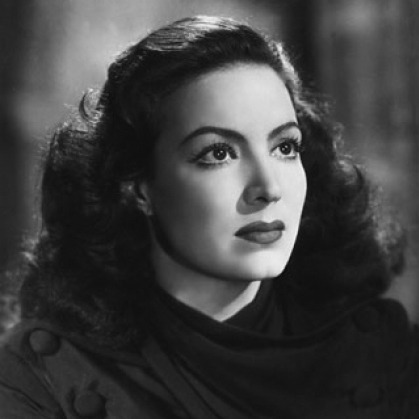

Propaganda
María Félix (Doña Barbara, La Mujer sin Alma, Rio Escondido, La Cucaracha)—Maria Felix is still possibly the most well-known Mexican film actress. She turned down multiple-roles in Hollywood and a contract with Metro-Goldwyn-Meyer in order to take roles in Mexico, France, and Argentine throughout the 1940s, 50s, 60s. She was so famous and so respected as a dramatic actress that she inspired painters, novelists and poets in their own art--she was painted by Diego Rivera, Jose Orozco, Bridget Tichenor. The novelist Carlos Fuentes used her as inspiration for his protagonist in Zona Sagrada. She inspired an entire collection by Hermes. In the late 1960s Cartier made her a custom collection of reptile themed jewels. She considered herself to be powerful challenger of morality and femininity in Mexico & worldwide--she routinely played powerful women in roles with challenging moral choices and free sexuality. But even still, years after he death, she is celebrated with Google Doodles, and appearances in the movie Coco, and holidays for the anniversary of her death.
Maureen O’Hara (The Parent Trap, The Quiet Man)—They called her the Queen of Technicolor. That right there should help introduce people to the fiery, wonderful, stunning Maureen O’Hara. She was from Ireland, born in 1920, and started in theater at the age of ten. At 15, she was winning drama awards, including one for her performance as Portia in the Merchant of Venice. At 16, she was the youngest pupil to graduate from the Guildhall School of Music. By 18, she transitioned to film, starting off with a bang alongside Charles Laughton in Hitchcock’s Jamaica Inn, and proceeded to work steadily up through the early 1970s. She was in adventures and comedies and romances, spent a lot of time in westerns giving merry hell to John Wayne (and less merry hell to the indomitable John Ford — she held her own even when he was verbally abusive and demeaning to her). She was in The Quiet Man, which was the first American-made film entirely filmed in a foreign country. She helped make American Christmas what it is with Miracle on 34th Street. She played a lineup of headstrong, forthright women second only, perhaps, to Katharine Hepburn. She was married three times, lived for a while with a boyfriend in Mexico, sued for custody of her daughter in the 1950s, AND sued a magazine for libel in the same era. After mostly retiring from acting, she edited a magazine. She eventually sold the magazine to spend more time with her grandson, but even then ran a ladies fashion store. She was an outspoken, brilliant, passionate lady, with amazing red hair, a career to envy, and — well — that face!
This is round 2 of the tournament. All other polls in this bracket can be found here. Please reblog with further support of your beloved hot sexy vintage woman.
[additional propaganda submitted under the cut]
María Félix:

She's Thee Hot Vintage Movie Woman of México. She's absolutely gorgeous and always looks like she's about to step on you. you WILL be thankful if she does.
"María Félix is a woman -- such a woman -- with the audacity to defy the ideas machos have constructed of what a woman should be. She's free like the wind, she disperses the clouds, or illuminates them with the lightning flash of her gaze." - Octavio Paz
María Félix is one of the most iconic actresses of the Golden Era of Mexican Cinema. La Doña, as she was lovingly nicknamed, only had one son, and when her first marriage ended in divorce her ex-husband stole her only child, so she vowed that one day she’d be more influential than her ex and she’d get her son back. AND SHE DID! María Félix rejected a Hollywood acting role to start her acting career in Mexico on her own terms with El Peñón de las Ánimas (The Rock of Souls) starring alongside actor, and future third husband, Jorge Negrete. She quickly rose to incredible heights both in Mexico and abroad, later on rejecting a Hollywood starring role (Duel in the Sun) as she was already committed to the movie Enamorada at the planned filming time. Of this snubbing she said, quote: “I will never regret saying no to Hollywood, because my career in Europe was focused in [high] quality cinema. [My] india* roles are made in my country, and [my] queen roles are abroad.” (Translator notes: here the “india” role means interpreting a lower-class Mexican woman, usually thought of indigenous/native/mixed descent —which she had interpreted and reinvented throughout her acting career in Mexico— and what abroad was typically considered the Mexican woman stereotype, with the braids, long simple skirts, and sandals. This also references the expectation of her possibly helping Hollywood in perpetuating this stereotype for American audiences that lack the cultural and historical contexts of this type of role which would undermine her own efforts against this type of Mexican stereotypes while working in Europe) She was considered one of the most beautiful women in the world of her time by international magazines like Life, París Match, and Esquire, and was a muse to a vast number of songwriters (including her second husband Agustin Lara,), artists, designers, and writers. Muralist Diego Rivera described her as “a monstrously perfect being. She’s an exemplary being that drives all other human beings to put as much effort as possible to be like her”. Playwriter Jean Cocteau, who worked with her in the Spanish film La Corona Negra (The Black Crown) said the following about her, “María, that woman is so beautiful it hurts”. Haute Couture houses like Dior, Givenchy, Yves Saint Laurent, Balenciaga, Hérmes, among others, designed and dressed her throughout her life. She died on her birthday, April 8, 2002, at 88 years old, in Mexico City. She was celebrated by a parade from her home to the Fine Arts Palace in the the city’s Historic Downtown, where a multitude of people paid tribute to her. Her filmography includes 47 movies from 1942 until 1970, and only two television acting roles in 1970. She has 2 music albums, one recorded with her second husband, Agustín Lara, in 1964 titled La Voz de María y la inspiración de Agustín «The voice of María and the inspiration of Augustín», and her solo album Enamorada «In Love» in 1998. Her bespoke Cartier jewelry is exhibited alongside Elizabeth Taylor’s, Grace Kelly’s and Gloria Swanson’s. In 2018, Film Director Martin Scorsese presented a restored and remastered version of her film Enamorada in the Cannes Classics section of the Cannes Festival and Google dedicated a doodle for her 104th birthday. On august 2023 Barbie added her doll to the Tribute Collection.

Maureen O'Hara:

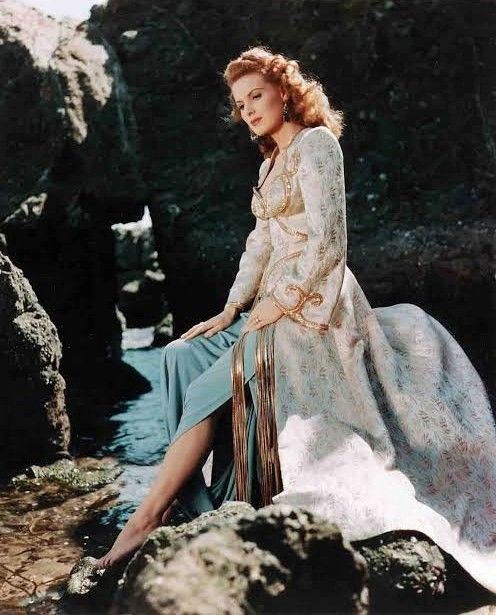
I thought she was one of the most beautiful women in the world when I was a kid and I have yet to really change my mind. Always loved her temper and her red hair. Plus she was kind of a MILF in The Parent Trap

Haughty, red hair, hot.
I would have to give up my passport if I didn't submit Maureen O'Hara but also have you seen her? Not only did she look like that (she was called the Queen of Technicolor, though she wasn't a big fan of that sobriquet), she was also very funny and tough as nails. She faced off against Walt Disney in a contract dispute and the legend goes that when someone mentioned her at his deathbed, he sat up and said 'That bitch!'. Her comment on that story is "At least he didn't think of me and say, 'That wimp'." She struggled to get serious roles for a time, saying ""Hollywood would never allow my talent to triumph over my face," so she plays the sexy princess/pirate/harem girl in a LOT of early movies that she referred to as "Tits and Sand" films, she being the tits in question. She also turned down so many leading men and studio bosses (Errol Flynn and Howard Hughes are among her rejects) that there were rumours spread that she was a lesbian. Many egos were battered it seems. I'm including the infamous Lady Godiva scene in the photo propaganda for the sheer Moment of it [link] . It was a bit of a flop critically, but it was one of Clint Eastwood's first film appearances and she said he told her later that he was very glad of the money at the time.
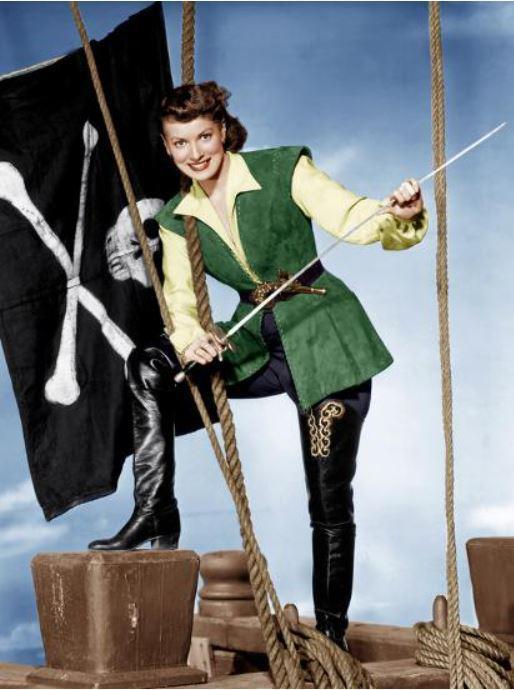

She was a very proud Irish woman and when she went for her American citizenship they insisted on referring to her as British (the timeline of Irish independence is a bit wibbly wobbly, we won't get into it here). She refused to accept American citizenship under that condition and argued her way through every level of US immigration she could find, supposedly saying "I'm not responsible for your antiquated records here in Washington", until a judge finally gave up and said "Give her what she wants, just get her out of here". This made her the first ever person seeking US citizenship to be proclaimed Irish on the record!
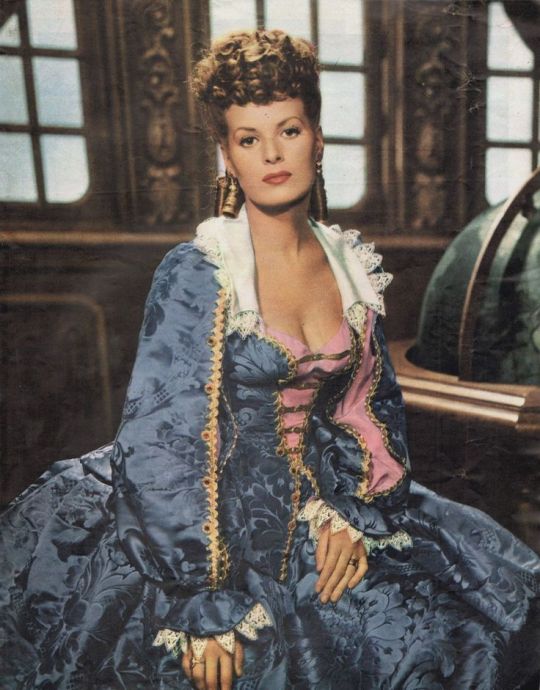
The hair. The accent. The figure. The acting chops. The perfection.

174 notes
·
View notes
Text


When Dora Maar died on 16 July 1997 at the age of 89, few people seemed to notice. It took the French newspaper Le Monde – in her home country – 10 days to publish anything. And when journalists did cotton on, they didn’t seem to think Maar was the story. The New York Times called her “a muse of Picasso” and the “principal model for many of his so-called weeping women portraits in the late 30s and early 40s”. The Independent, while admitting that Maar had been an artist in her own right, suggested that she would nonetheless be “remembered as the most poignant of Pablo Picasso’s mistresses”.
Forget that she’d also been a major surrealist photographer, one of the few women in that circle, and that she was still painting into her 80s. For critics, she was Picasso’s Weeping Woman – the eternally spurned mistress and muse. Maar herself bitterly resented being regarded as a sort of art-world Miss Havisham, the subject of someone else’s picture. “All [Picasso’s] portraits of me are lies,” she once said. “Not one is Dora Maar.”
Not before time, the Weeping Woman is having the last laugh. After a spell at the Pompidou in Paris, a major retrospective is heading to London’s Tate Modern then Los Angeles. The largest exhibition of its kind yet staged, it features nearly 300 objects: photographs, photomontages, advertising mock-ups, self-portraits, watercolours, oil landscapes and still lives. Few of these objects have been exhibited before, and certainly not on this scale. The sense is of a curtain being pulled back. Forget those Picasso portraits: here is how Dora Maar actually wanted to be seen.
Born Henriette Théodora Markovitch in Paris in 1907, to a French mother who owned a fashion boutique and a father who was a Croatian architect, her upbringing was multicultural. The family relocated to Buenos Aires when she was three, and she spent her childhood shuttling between Europe and South America, taking her first photographs on the sea journeys between. She trained as a painter in Paris, but found herself drawn to photography in the 1920s, becoming friendly with Henri Cartier-Bresson and Brassaï.
“She was very ambitious,” says her biographer, Victoria Combalia. “She wasn’t sure which direction she was going in, but she had such energy.”
In 1936 she met Picasso, and seems to have decided that the painter, nearly 30 years older, was her next project. The story of the encounter that turned them into lovers has been much mythologised. Legend has it that Maar sat in the famous literary watering hole, the Cafe les Deux Magots, playing a game where she stabbed a knife between her fingers to excite Picasso’s attention.
Whatever the truth, Combalia suggests that the striking thing is the way it suggests that she, not he, was in charge. “She wanted to seduce him, I’m sure. The whole scene with the knife is like a sadistic joke, almost a performance.”
Yet the balance soon tipped the other way. Picasso was also having a long-running affair with Marie-Thérèse Walter, which he refused to break off. He seems to have taken a perverse thrill in making Walter and Maar compete for his affections, describing a story where they came to blows in his studio as “one of my choicest memories”. Having initially painted Maar as a nymph or a bird, his portraits begin to show her in tears, notably the excruciating Weeping Woman (1937), now in Tate’s permanent collection, in which she seems to dissolve before our eyes.
Maar’s own artistic response is similarly hard to look at, though in quite different ways. A painting of hers from the same year, The Conversation, shows her and Walter sitting next to each other, almost in mirror image. Walter looks out, passive and inscrutable; Maar has her back to us, face hidden.
Yet while the relationship was emotionally punishing, it was productive. 1937 was also the year that Picasso painted Guernica, and Maar – as well as teaching him darkroom techniques – agreed to photograph the process of its creation. Indeed, it seems likely that his decision to depict that particular atrocity came from Maar, who was far more politically engaged. Not only does its style – severe black-and-white, almost photographic in its pitiless detail – borrow from her work, she actually painted a small section of it.
“He trusted her,” says Tate Modern director Frances Morris, who interviewed Maar when the latter was in her 80s. “As much as being a sexual or emotional relationship, it was a collaborative one.”
When their relationship finally fell apart in 1945, Maar was devastated and suffered a brief breakdown, intensified by the death of her mother. The guilt-stricken Picasso helped her buy a house in Provence, where she spent an increasing amount of her time. Catholicism began to occupy her life; rumours circulated – fanned by her former partner – that she’d gone mad, or become a recluse.
The truth is different, Combalia says: Maar kept making art, producing textile designs and devoted more time to painting. She also travelled, and continued to exhibit through the 50s and 60s. It’s also not true that she abandoned photography, as some claim. Though she made fewer photographs after the break with Picasso, she continued to experiment, crafting a late series of photograms (photographic prints made without a camera) in the 80s, as if reconnecting with her younger artistic self.
Maar never regained the profile she had experienced in her 20s, yet it’s wrong to say she disappeared. It was a slow withdrawal, and came about largely because Maar wanted to focus on her art. “In letters she writes, ‘Well, I don’t want to be social, I want to do my own thing. I have to paint,’” says Combalia
Morris, who visited Maar at her apartment in Paris in 1990, agrees. “It was an artist’s home. Every surface, every wall, spoke of that. There were easels and lots of canvases in her studio, covered in polythene. She was still working.”
What was Maar like to meet? Morris laughs: “When she answered the door, I thought at first it was the maid, this little old woman.” But she was soon struck by Maar’s forcefulness. “She was terrifically strong, you could see that. I think that’s what it was, in a way: making art was more important to her than how she was perceived.”
“She was very curious about the world,” Combalia adds. “She was always asking me what I was doing in Paris, what the name of my boyfriend at the time was. She loved gossip.”
Despite Maar’s talents being overlooked during her lifetime, Combalia believes we should be grateful that we can see so much work, and that so much of it is so good. “She really deserves to be known. We owe her that justice.”
36 notes
·
View notes
Text
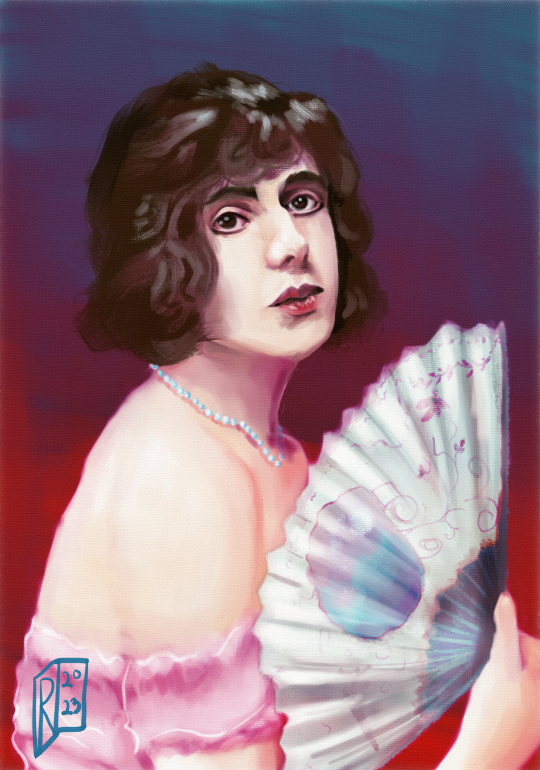
Lili Elbe
So this is a bit of a personal piece for me. I'm currently fighting what seems to be a losing battle to get to transition medically, so I decided to paint Lili in protest of that. The reference I used for colouring is a portrait her (then) wife painted of her and that honestly makes me a little insane? Like. I'm painting her through the eyes of her lover. That's wild.
Little info about her: She was a Danish painter who was assigned male at birth and was among the first to receive gender affirming surgery in 1930. By the 1920's she often presented as a woman, even outside of home.
Reblogs are always appreciated <33 (and comms are open as well)
Tag list (DM me to join):
@dukeoftheblackstar @penandsaber @poisonedyouth @saga-ordsmed @rt-d00-t @milf-maul @brother-genitivi @idontmeanto @stand-up-and-screamo @thechaoticfanartist
33 notes
·
View notes
Text
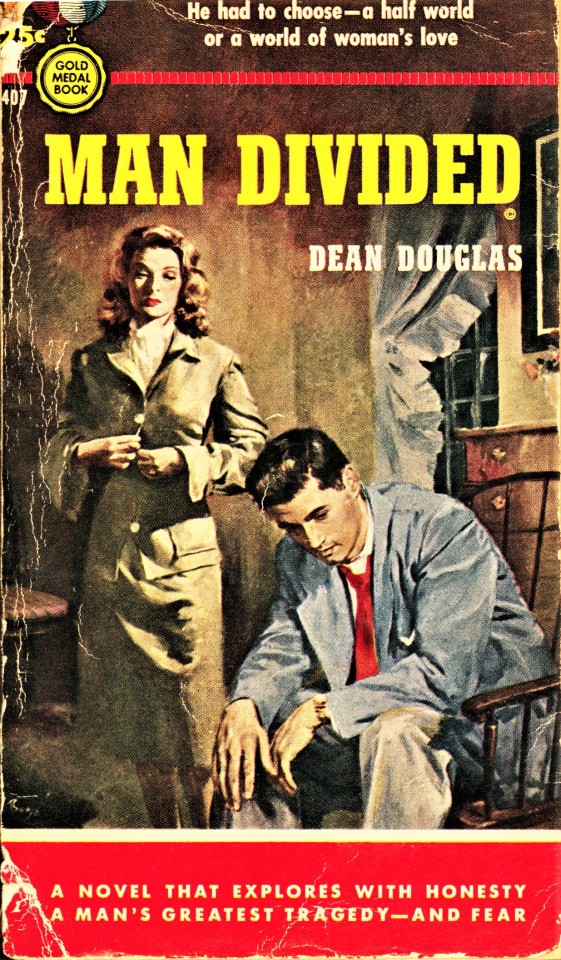
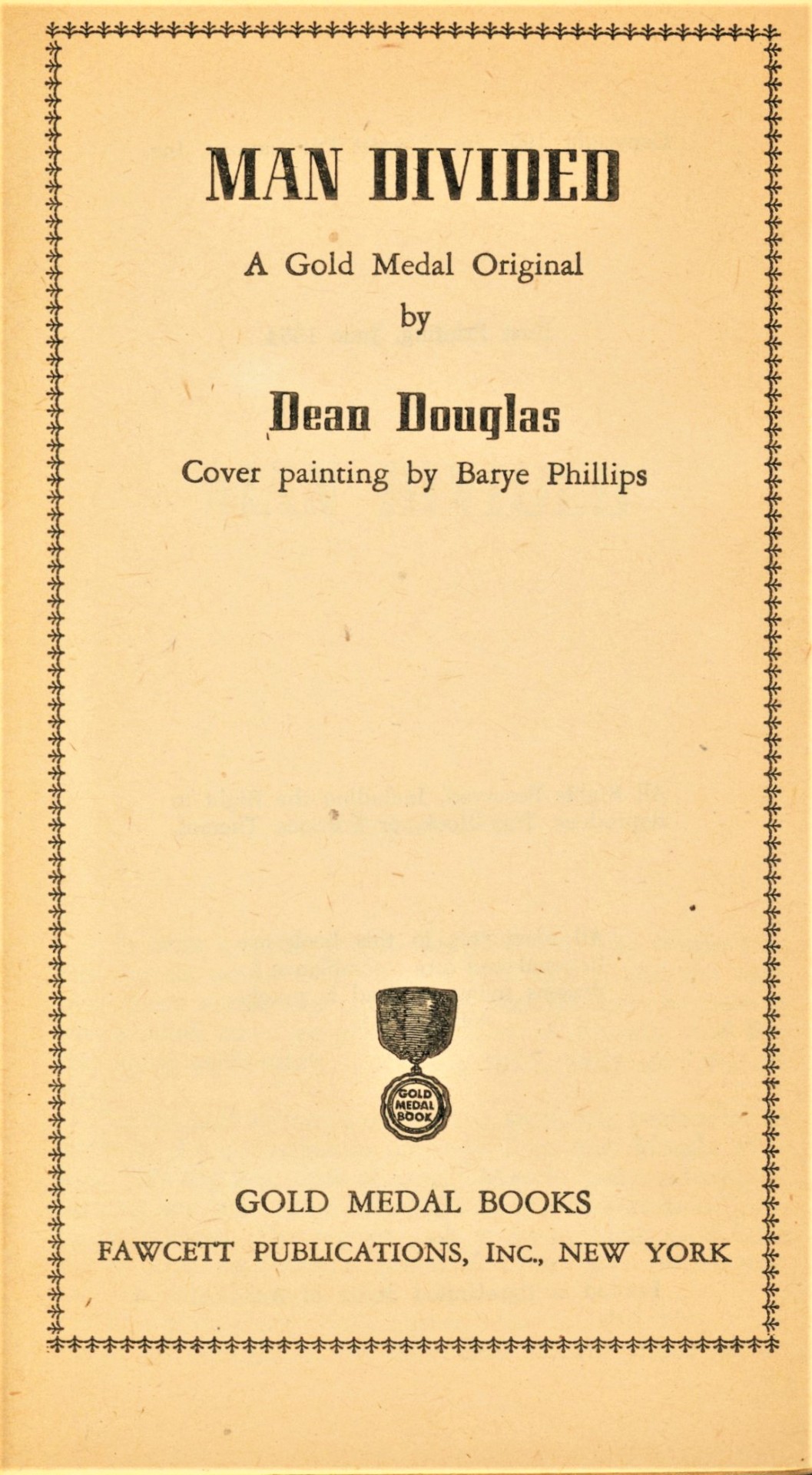
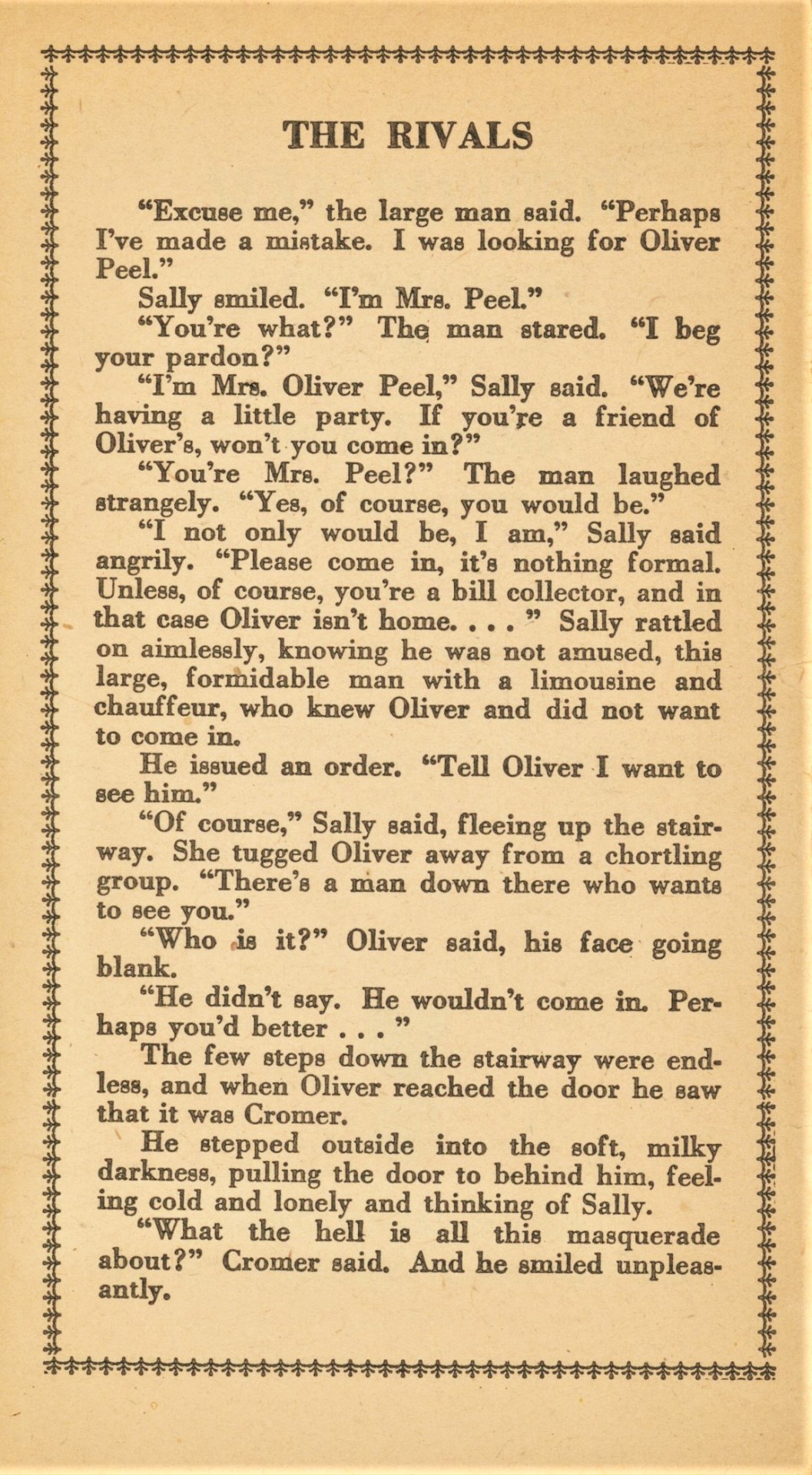
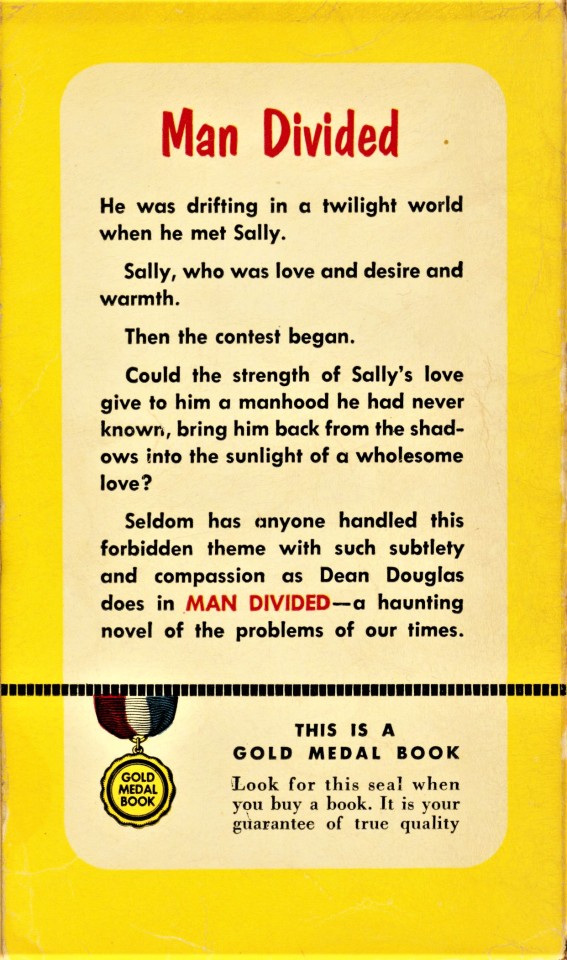
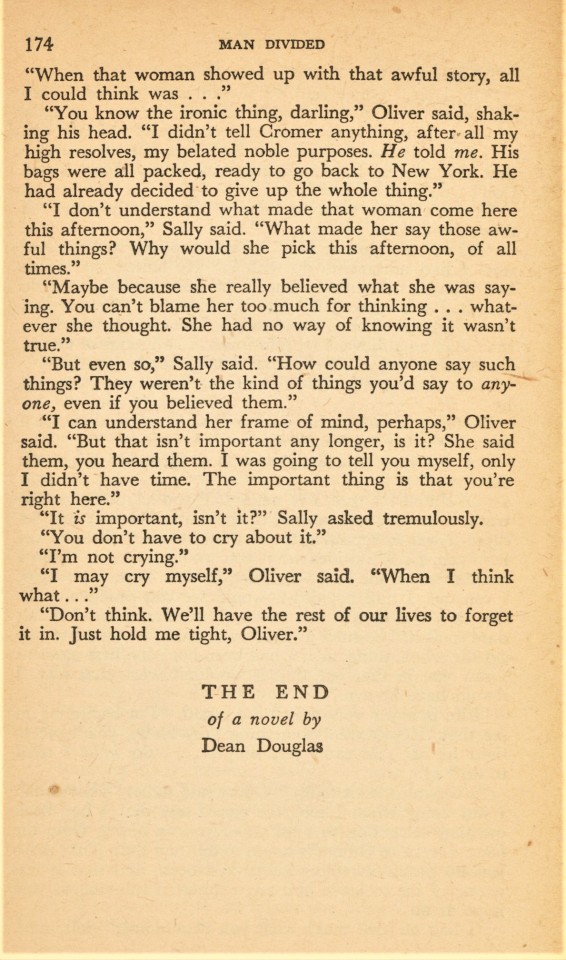
Steamy Saturday
Poor Oliver Peel. He faces "man's greatest tragedy -- and fear," having to choose between "a half world or a world of woman's love." C'mon, Oliver! Stop sulking. Get out of that chair, stand up for yourself, and embrace your true nature! But, alas, it is the early 1950s, and Oliver can only redeem himself through the true love of his wife Sally. Pity.
This week we bring you another gay romance novel, this time Man Divided by Dean Douglas, published in 1954 as an original pulp paperback by Gold Medal Books, an imprint of Fawcett Publications. Billed as "a haunting novel of the problems of our times," the narrative address the question, "Could the strength of Sally's love give him a manhood he had never known, bring him back from the shadows into the sunlight of a wholesome love?" Well, apparently it could, but we can only hope that it's wholesome. Sally's solution: "Don't think. We'll have the rest of our lives to forget it in. Just hold me tight. . ." Good luck with that, Oliver.
Douglas Dean was a pseudonym used by the actor Dean Goodman (1920-2006), who was a radio, stage, and screen actor, once married to the daughter of Marlene Dietrich. He managed several well-known theatre companies and even helped form a union for community college professors. His work as Douglas Dean includes 12 paperback novels and short story collections. The cover art is by Barye Phillips (1924-1969), an American painter and illustrator of pulp magazines and paperbacks.
View other pulp fiction posts.
#Steamy Saturday#pulp fiction#romance fiction#romance novels#gay romance novels#gay fiction#Dean Douglas#Dean Goodman#Man Divided#Gold Medal Books#Fawcett Publications#Barye Phillips#gay men#homosexuality#LGBTQ+#UWM LGBT Collection
26 notes
·
View notes